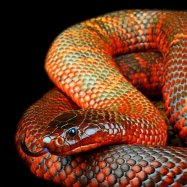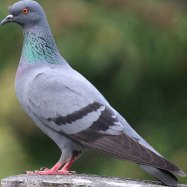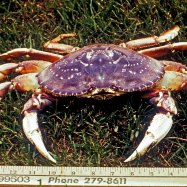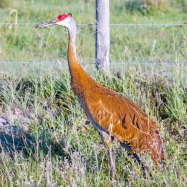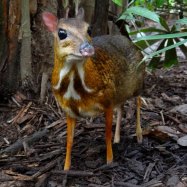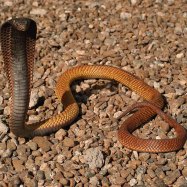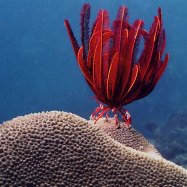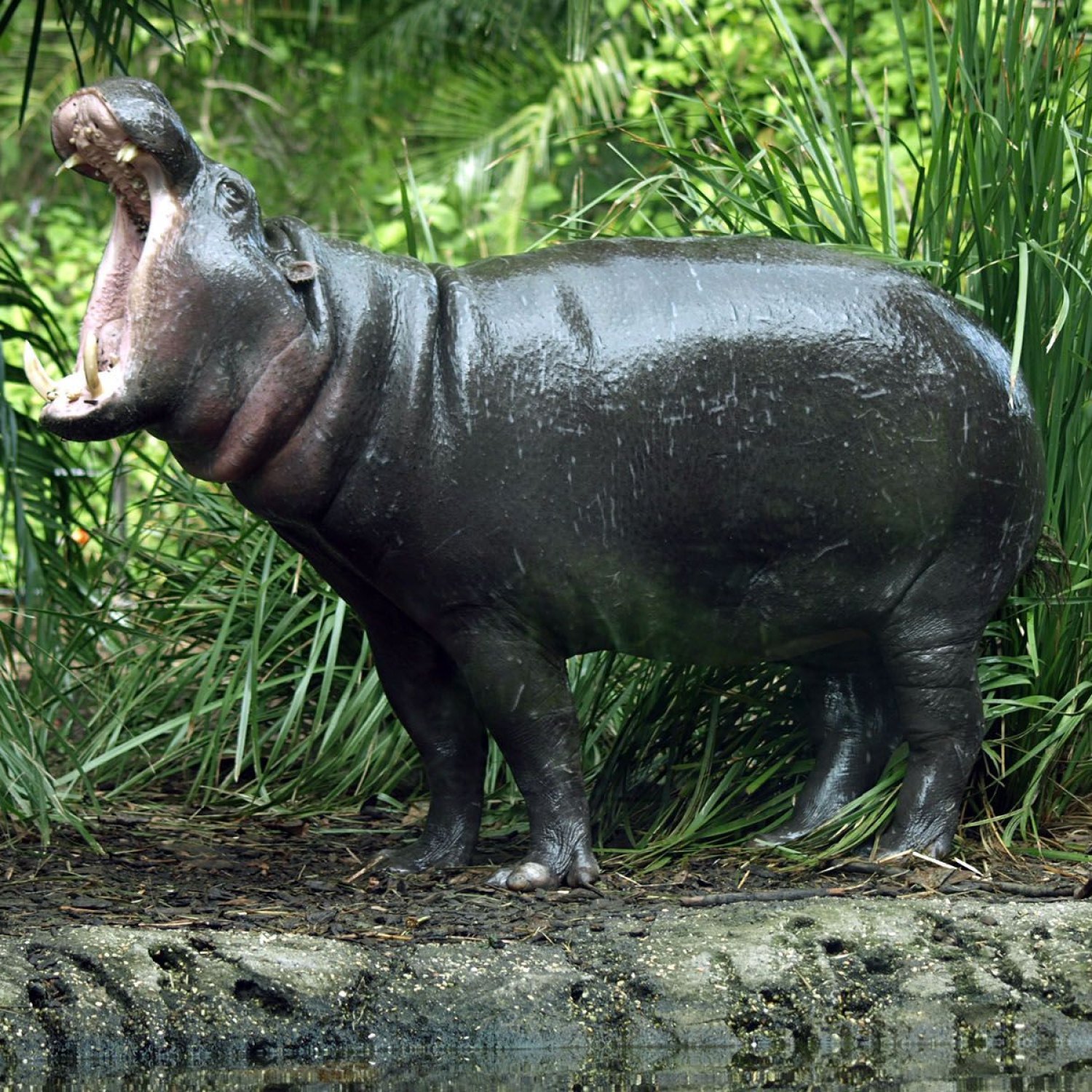
Pygmy Hippopotamus
1.2 to 1.7 meters (3.9 to 5.6 feet)
The Pygmy Hippopotamus is a unique and fascinating animal found in sub-Saharan Africa. Despite its small size, measuring only 1.2 to 1.7 meters, this hippo is still a force to be reckoned with. Its large barrel-shaped body, short legs, and big head make it distinct from its larger counterparts. Keep your eyes peeled for the Pygmy Hippo on your next safari adventure! #PygmyHippo #SubSaharanAfrica #Wildlife
Animal Details Summary:
Common Name: Pygmy Hippopotamus
Kingdom: Animalia
Habitat: Tropical forests, swamps, and rivers
The Fascinating World of the Pygmy Hippopotamus
Imagine walking through a dense tropical forest and suddenly stumbling upon a shy, yet majestic creature quietly munching on some vegetation. You may think it's a mini version of a regular hippopotamus, but in fact, you have just encountered a pygmy hippopotamus, one of the most fascinating and elusive animals in the world. This small but mighty creature has captured the hearts of many nature lovers and researchers, and today, we will discover why.The scientific name of this gentle giant is Choeropsis liberiensis, but it is commonly known as the pygmy hippopotamus Pygmy Hippopotamus. It belongs to the Animalia kingdom, the phylum category of Chordata, and the class Mammalia, just like us humans. It is a member of the Artiodactyla order, which includes other hoofed animals such as deer and giraffes. The pygmy hippopotamus is a part of the Hippopotamidae family, making it a distant relative of the larger and more well-known hippopotamus.
These animals are mainly found in the dense tropical forests, swamps, and riverbanks of West Africa, specifically in Sierra Leone, Guinea, Liberia, and Ivory Coast. However, they have also been spotted in other parts of the continent, such as Gambia and Ghana. Their natural habitat is rapidly decreasing due to deforestation and human encroachment, making the pygmy hippopotamus a vulnerable and endangered species.
Feeding Method: Like its larger cousin, the pygmy hippopotamus is a herbivore, which means it mainly feeds on plants and vegetation. Their diet usually consists of various leaves, fruits, and aquatic plants found near rivers and streams. They have a specially adapted jaw structure that allows them to eat tough and woody vegetation with ease Peppermint Angelfish. Additionally, they also play a crucial role in shaping their ecosystem by dispersing seeds through their feces.
Country of Origin: The pygmy hippopotamus is native to Sierra Leone, with the majority of the population found in the eastern part of the country. They are also the national animal of Sierra Leone and are deeply ingrained in the country's culture and traditions.
Location: These fascinating creatures can be found in various countries in Sub-Saharan Africa, including Nigeria, Togo, and the Democratic Republic of Congo. However, they are most commonly found in Sierra Leone and are protected by law to prevent over-harvesting and hunting.
Animal Coloration: One of the most distinct features of the pygmy hippopotamus is its dark gray to brown coloration. This allows them to blend seamlessly into their natural surroundings, making them less conspicuous, which is crucial for their survival in the wild. Additionally, their skin is thick and tough, providing them with protection from insect bites and scratches from sharp vegetation.
Body Shape: The pygmy hippopotamus has a unique body shape, with a large barrel-like body and short legs. This is in stark contrast to the larger hippopotamus, which has a stockier and more robust build. Their large heads have a flattened snout and distinct nostrils high up on their long noses, enabling them to stay submerged in water for an extended period. They also have small, hairy ears that can close when submerged in water, allowing them to swim with ease.
Length: On average, pygmy hippos can grow up to 1.2 to 1.7 meters (3.9 to 5.6 feet) in length, making them significantly smaller than regular hippos. Despite their smaller size, they can weigh up to 320 to 550 pounds, making them one of the largest mammals in their native habitat.
Despite its name, the pygmy hippopotamus is not a mini version of the regular hippopotamus; rather, it is an entirely different species. They are elusive creatures and are not commonly seen in the wild, making them challenging to study. However, researchers have been able to uncover some fascinating facts about these gentle giants through careful observation and the use of technology.
Similar to other animals in their order, the pygmy hippopotamus is a semi-aquatic animal and has a unique behavior of staying underwater for up to five minutes at a time. They also have a keen sense of smell and can mark their territory by spraying a thick, smelly substance from their glands onto rocks and trees.
Interestingly, pygmy hippos are solitary animals, only coming together during mating season. The female pygmy hippo gives birth to a single calf every two years, and the young ones are hidden away in dense vegetation for protection. The infants are also born with a reddish-brown coat, which turns to the characteristic dark gray as they mature.
One of the main reasons why these animals are so elusive is their shyness and their ability to hide in the dense undergrowth of their natural habitat. Additionally, their nocturnal nature makes it even more challenging to catch a glimpse of them during the day.
The pygmy hippopotamus is a species that is currently under threat due to human activities such as deforestation, poaching, and civil unrest in their native countries. Their population is estimated to be less than 3,000 in the wild, making them vulnerable to extinction. Several conservation efforts, such as habitat preservation, captive breeding, and community education, are in place to protect these gentle creatures.
In conclusion, the pygmy hippopotamus may be small in size, but it is mighty in its impact on its ecosystem. Its unique characteristics and natural behaviors make it a fascinating animal to study, and it is a reminder of the diverse and wonderful creatures that coexist on our planet. As humans, it is our responsibility to protect and preserve these animals for future generations to appreciate and admire. So, let's do our part in promoting conservation efforts and spreading awareness about the pygmy hippopotamus and its importance in the delicate balance of our ecosystem.

Pygmy Hippopotamus
Animal Details Pygmy Hippopotamus - Scientific Name: Choeropsis liberiensis
- Category: Animals P
- Scientific Name: Choeropsis liberiensis
- Common Name: Pygmy Hippopotamus
- Kingdom: Animalia
- Phylum: Chordata
- Class: Mammalia
- Order: Artiodactyla
- Family: Hippopotamidae
- Habitat: Tropical forests, swamps, and rivers
- Feeding Method: Herbivore
- Geographical Distribution: West Africa, specifically Sierra Leone, Guinea, Liberia, and Ivory Coast
- Country of Origin: Sierra Leone
- Location: Sub-Saharan Africa
- Animal Coloration: Dark gray to brown
- Body Shape: Large barrel-shaped body with short legs and a large head
- Length: 1.2 to 1.7 meters (3.9 to 5.6 feet)
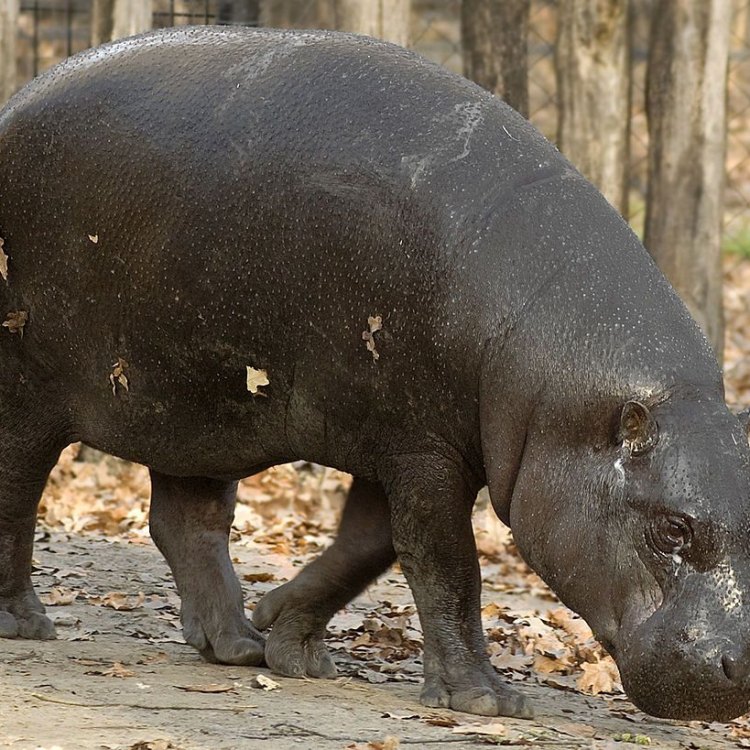
Pygmy Hippopotamus
- Adult Size: Around 70 to 80 centimeters (28 to 31 inches) tall at the shoulder
- Average Lifespan: Around 40 to 50 years
- Reproduction: Sexual
- Reproductive Behavior: Polygamous
- Sound or Call: Loud grunts and wheezes
- Migration Pattern: Non-migratory
- Social Groups: Solitary or small family groups
- Behavior: Mostly nocturnal and shy
- Threats: Habitat loss, poaching, and hunting
- Conservation Status: Endangered
- Impact on Ecosystem: Role as a keystone species in its habitat
- Human Use: Poaching for meat and parts, and for conservation and education purposes in captivity
- Distinctive Features: Smaller size compared to common hippos, long upper canines, and a more slender body
- Interesting Facts: Pygmy hippos are excellent swimmers and can hold their breath for several minutes underwater. They are also known to create wallows, which are depressions in the ground filled with water. These wallows serve as cooling areas and provide a protective layer against insects and parasites.
- Predator: Humans (through hunting)
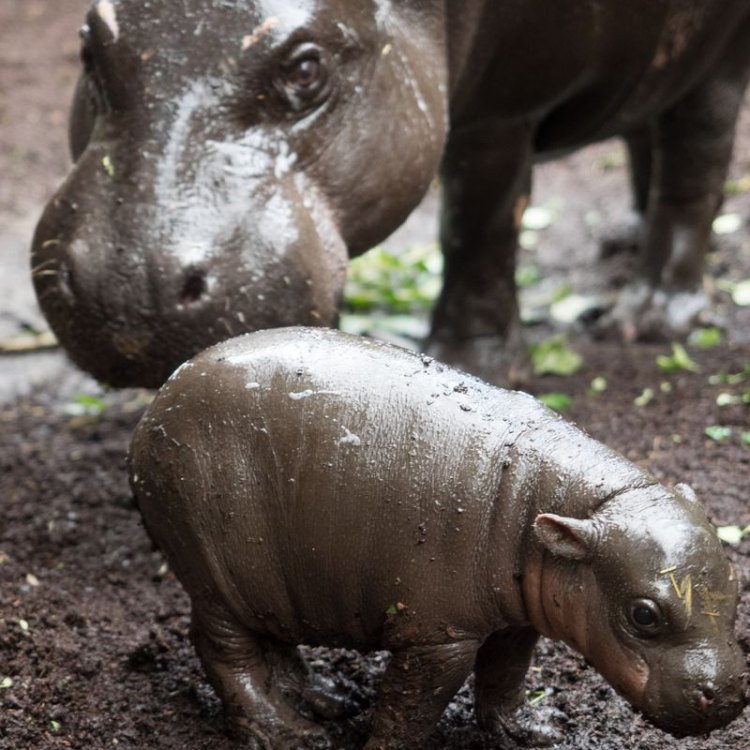
Choeropsis liberiensis
The Fascinating World of the Pygmy Hippopotamus: A Unique and Endangered Species
In the vast African savannas, where majestic elephants and powerful lions roam, there is a lesser-known but equally captivating creature - the pygmy hippopotamus. This elusive and endangered mammal, also known as the "dwarf hippo," is a rarity in the wild, with a population estimated to be less than 3,000 individuals. Here, we delve into the fascinating world of this unique species and uncover its distinct features, behavior, and vital role in its ecosystem.Size and Lifespan
One of the defining features of the pygmy hippopotamus is its size PeaceOfAnimals.Com. As its name suggests, this species is considerably smaller than the common hippopotamus, standing at around 70-80 centimeters (28-31 inches) tall at the shoulder. It is also more slender with a weight of 160-270 kilograms (350-600 pounds). In comparison, common hippos can reach up to 1,500 kilograms (3,300 pounds), making pygmy hippos almost five times lighter.
Despite its small size, this species has an impressive lifespan of 40-50 years in the wild. In captivity, they have been known to live up to 55 years, making them one of the longest-living semi-aquatic mammals.
Reproduction and Behavior
Pygmy hippos have a sexual mode of reproduction, meaning they require a male and female to reproduce. They are polygamous, which means they have multiple mating partners. During the mating season, males will compete for females, engaging in fights and displaying their dominance by making loud grunts and wheezes.
After a gestation period of 190-210 days, the female gives birth to a single calf, weighing around 5-6 kilograms (11-13 pounds) Pit Bull. The calf will stay with its mother for two to three years, and the female can give birth to one calf every two to three years.
Pygmy hippos are mostly solitary and shy animals, with the exception of females and their offspring who form small family groups. They are also predominantly nocturnal, meaning they are most active at night, while spending the day resting and sleeping in or near water sources.
Sound and Migration Patterns
Despite being mostly solitary, pygmy hippos are not entirely silent creatures. They communicate through a range of vocalizations, including loud grunts and wheezes. These sounds are used to warn off other hippos or attract potential mates during the breeding season.
Unlike common hippos, pygmy hippos do not migrate. They remain in their home range throughout their lives, only moving to find new water sources during the dry season. This non-migratory behavior makes them more susceptible to habitat loss and fragmentation, resulting in isolated populations with limited genetic diversity.
Habitat and Conservation Status
Pygmy hippos are native to the dense forests and swamps of West Africa, particularly in Liberia, Sierra Leone, and the Ivory Coast. They are semi-aquatic animals, spending most of their time in or near water sources, such as rivers, streams, and swamps.
Unfortunately, like many other endangered species, the pygmy hippopotamus faces significant threats in its natural habitat. Habitat loss and fragmentation, due to human activities such as logging, mining, and agriculture, have greatly reduced their home range. Poaching is also a major threat, as their meat and parts are highly valued for human consumption. They are also hunted for medicinal purposes and for their skins.
These threats have led to a decline in their population, earning them an "endangered" status on the IUCN Red List of Threatened Species. Their habitat is now restricted to protected areas and national parks, such as the Sapo National Park in Liberia, where conservation efforts are in place to protect them.
Role in the Ecosystem
Despite their small numbers, pygmy hippos play a vital role as a keystone species in their ecosystem. Their wallows, which are depressions in the ground filled with water, serve as important cooling areas and provide protection against insects and parasites. These wallows also create pockets of biodiversity, attracting other species such as birds, invertebrates, and amphibians.
The pygmy hippo's grazing and browsing behavior also contribute to maintaining the balance of vegetation in its habitat. They consume a variety of plants, grasses, and fruits, dispersing seeds throughout their home range. This ultimately helps in maintaining the diversity of plant species in their habitat.
Human Use and Distinctive Features
Sadly, humans have also impacted the pygmy hippo's life in various ways. In some regions, they are hunted for their meat and body parts, while in others, they are sought after for conservation and educational purposes in captivity. Their smaller size and unique appearance make them popular attractions in zoos and wildlife parks around the world, helping to raise awareness about their endangered status and the threats they face.
Pygmy hippos are easily recognizable due to their distinct features. Besides their smaller size compared to common hippos, they have long upper canines that protrude from their mouth. These teeth are used for defense and display during mating rituals. They also have a more slender body, adapted for navigating through dense forest vegetation.
Interesting Facts
The pygmy hippopotamus is a fascinating species with many unique features and behaviors. For instance, it is an excellent swimmer, using its powerful legs and webbed toes to navigate the water with ease. It can also hold its breath for several minutes underwater, allowing it to stay submerged while grazing on aquatic plants.
Another interesting fact about this species is that it creates its own wallows. These wallows serve many purposes, as mentioned earlier, but they also act as a territorial marker. By creating a wallow, a pygmy hippo is claiming that area as its own, warning off other individuals in the process.
Predators and Conservation Efforts
In the wild, the pygmy hippo does not have many natural predators. Its main threat is humans through poaching and hunting. Due to their elusive nature and shy behavior, they are difficult to spot in the wild and provide little opportunity for natural predators, such as crocodiles and leopards, to prey on them.
Thankfully, conservation efforts are in place to protect this unique and endangered species. The Pygmy Hippopotamus Conservation Project, based in Sierra Leone, works to protect and study the pygmy hippo population in the country. They also provide community education and outreach programs to raise awareness about the importance of preserving this species.
In conclusion, the pygmy hippopotamus may not be as well-known as its larger cousin, the common hippo, but it is equally captivating and deserving of our attention and protection. Its small size, reproductive behavior, vocalizations, and solitary nature make it a unique and fascinating species to study. As we continue to learn more about this elusive animal, we must work towards its conservation and preservation to ensure its survival for future generations to appreciate its role in the ecosystem and its distinct features.
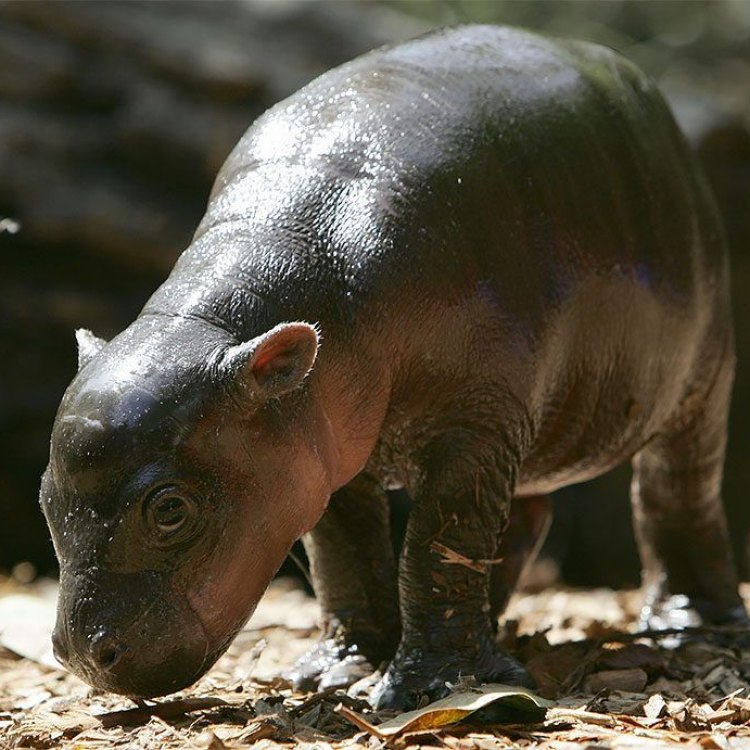
The Fascinating World of the Pygmy Hippopotamus
Disclaimer: The content provided is for informational purposes only. We cannot guarantee the accuracy of the information on this page 100%. All information provided here may change without prior notice.

